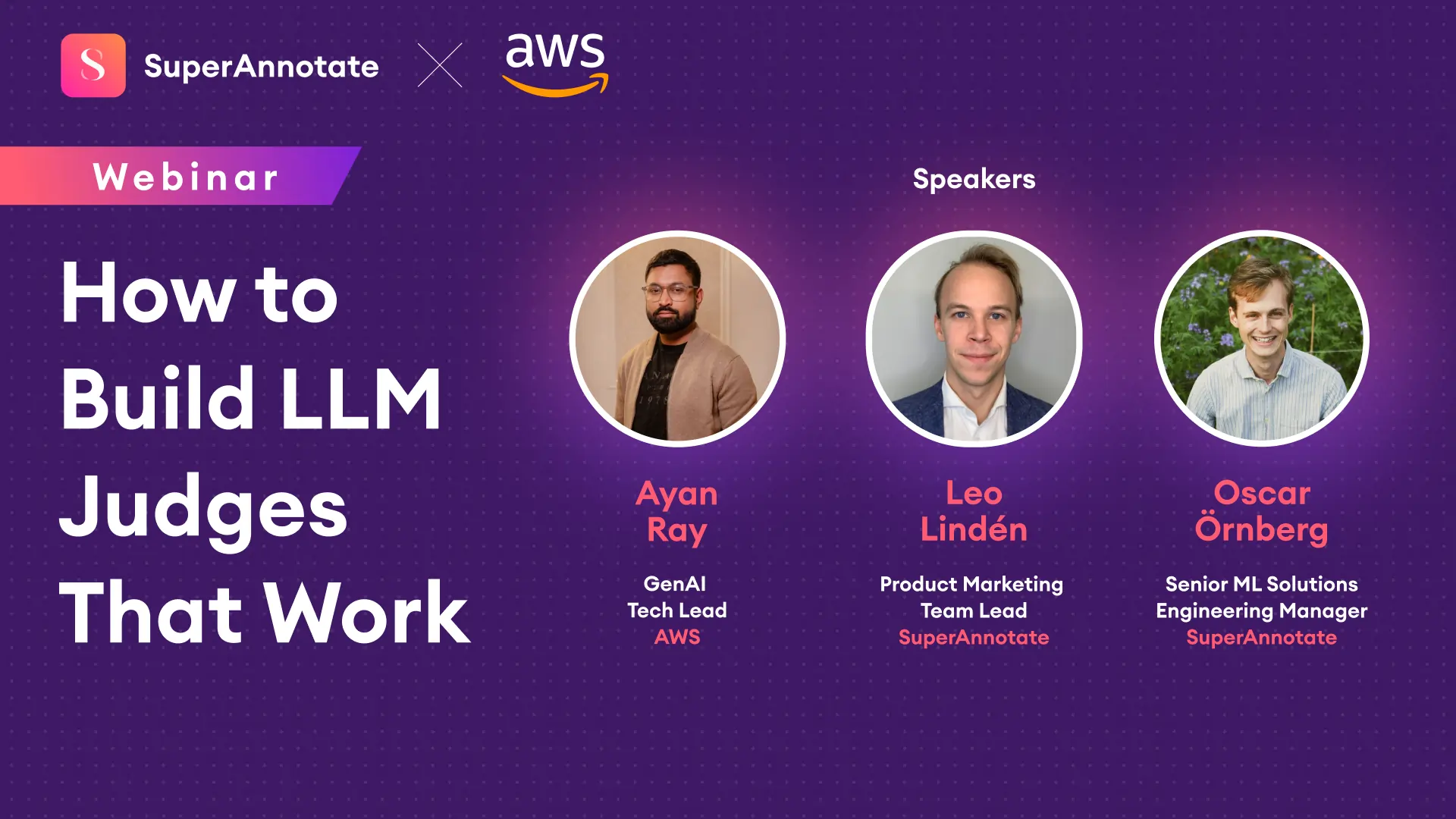Large language models (LLMs) and retrieval-augmented generation (RAG) are rapidly showing promise in delivering business value. For this reason, we have organized a webinar that delves into their capabilities to help you gain tangible insights into assessing these models for optimal alignment with your objectives.
Guided by insights from the recent SuperAnnotate and Databricks collaboration, you will learn how to unlock the nuances of assessing RAG-based models and make informed decisions on their fit for your enterprise.
Understanding LLMs
An LLM is a machine learning model designed to predict subsequent sequences of text based on previous input. LLMs are applied in various use cases, including coding, customer experience, writing, information retrieval, and more. For example, you can use LLMs to generate a cover letter or even write a response to a customer inquiry.
The first problem with LLMs: Hallucinations
As models are trained on predicting (aka making up) text, they can suffer from what is often called hallucinations, which is when the model makes things up. In some cases, this is what is exactly needed, especially when using them for creative tasks. In other cases, this is a massive problem. For example, when we need the model to provide facts or retrieve information. So, how do we overcome this issue? This is where retrieval augmented generation (RAG) comes in.
The solution to hallucinations: Retrieval augmented generation
The most reliable and cost-effective approach to solving hallucinations is through RAG. But how does this work? Instead of asking the LLM what SuperAnnotate is, for instance, the source of truth is retrieved from the knowledge base and handed over to the LLM that can use it as a context. This largely reduces the chance of hallucination. Additionally, the LLM won’t need to be retrained; the knowledge base just needs to be updated.
SuperAnnotate helped Databricks use RAG to build the following:
- Documentation chatbot to which users can ask questions about Databricks.
- Context-aware assistant in the workspace environment that assists users in many tasks, such as coding and debugging.
The second problem with LLMs: Model evaluation
The evaluation of an LLM is challenging because it’s subjective and time-consuming. First, different individuals have varying opinions on what constitutes a "good" response. Second, feedback collection requires a customized tech stack. It also needs filtering and reviews.
The solution to model evaluation: Standardization and scalability
With SuperAnnotate, Databricks overcame the challenges that come with model evaluation through standardization and scalability.
- Standardization: SuperAnnotate helped create a comprehensive and easy-to-understand grading rubric, which helped Databricks improve the consistency of the LLM output.
- Scalability: SuperAnnotate helped Databricks easily get standardized annotated results within a week and only needed a very simple sanity check before using the data for research.
What if the model isn’t good enough?
If the model isn’t performing as expected, you need to determine where the error lies and make changes accordingly:
- Change the base model
- Improve the question (prompt engineering)
- Adapt the model to the use case (fine-tuning)
- Incorporate human preferences (reinforcement learning from human feedback)
If the problem is coming from the retrieval step, you have to train the model with explicit instructions; you also need good evaluation and fine-tuning. This is where SuperAnnotate comes in. With SuperAnnotate, you can:
- Prepare and fine-tune
- Explore and evaluate data: query, structure, and manage your dataset
- Orchestrate and automate pipelines
- Find expert workforces to work on complex or specialized LLM use cases.
Are you ready to drive innovation? Watch the webinar to learn more about LLMs and RAG to see if it’s the right solution for you.
Ready to power your innovation with AI? Then watch the webinar below.




